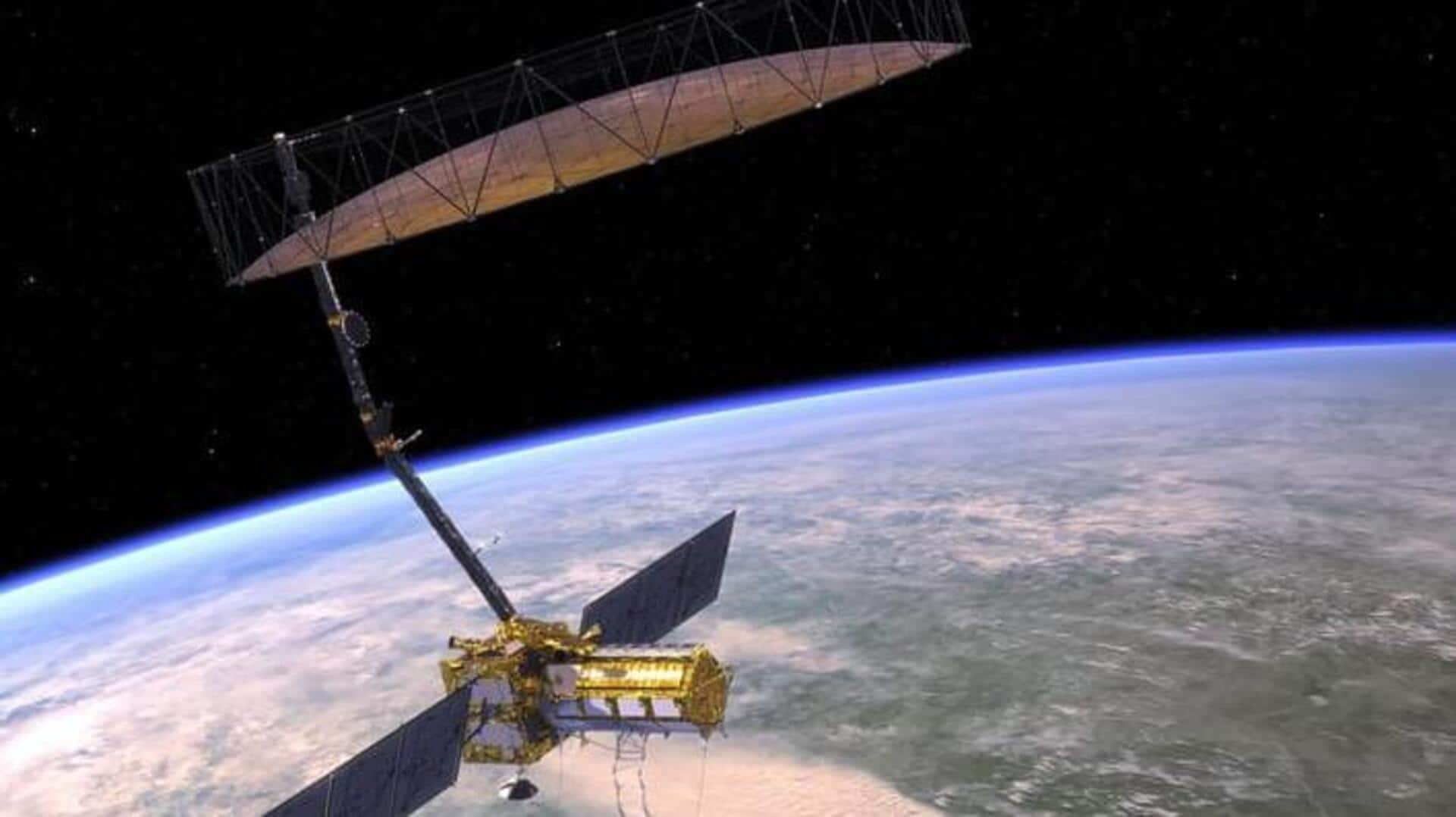
NASA-ISRO Earth-observing satellite achieves key milestone ahead of early-2024 launch
What's the story
The NISAR (NASA-ISRO Synthetic Aperture Radar) mission is picking up pace. Built by Indian Space Research Organisation (ISRO) and NASA, NISAR is touted to be the world's most expensive imaging satellite, estimated to cost around $1.5 billion. The mission can map our planet with great detail, covering forests, agricultural lands, and vast water bodies. Here are the latest developments on the upcoming mission.
Context
Why does this story matter?
With the rising concerns of climate change, sophisticated monitoring satellites appear to be the need of the hour. We have a solution in NISAR. Carrying breakthrough technology and the involvement of both NASA and ISRO, the mission would prove to be momentous in helping scientists gain a better understanding of our changing planet, at a time when it is most crucial.
Developments
Main components of NISAR satellite have been integrated
According to the latest developments shared by NASA, the two main components of the NISAR satellite, namely the spacecraft and the cylindrical radar instrument payload have been integrated successfully in Bengaluru. The radar payload arrived from NASA's Jet Propulsion Laboratory in March, while the bus was being built at the ISRO facility. The space agencies plan to launch the mission in early 2024.
Payload
NISAR's radar payload measures the size of an SUV
NISAR's radar instrument payload measures the size of an SUV and contains two radar systems. Among its various features, S-band radar can track crop structure and rough land and ice terrains, while the L-band instrument can observe past thick forest canopies to study the tree trunks. The satellite will map every part of our planet at least once in 12 days.
Information
NISAR data will shed light on climate change
By observing forests to agricultural lands, the upcoming NISAR satellite's measurements will help scientists gain a better understanding of climate change, deforestation, glacier melt, and natural hazards such as volcanoes and earthquakes.
Contributions
Take a look at NASA's role in the mission
NISAR involves equal contributions from both NASA and ISRO. It is the first time the two space agencies have come together for "hardware development for an Earth-observing mission." Along with the L-band SAR radar, NASA is providing the engineering payloads for the mission, including a reflector antenna, a deployable boom, a high-rate communication subsystem, GPS receivers, a solid-state recorder, and a payload data subsystem.
ISRO
These are ISRO's contributions to the mission
Coming to ISRO's contributions to NISAR, it is supplying the spacecraft bus and the S-band radar. The spacecraft bus provides the power, navigation, pointing control, and communications for the Earth-observing mission. Additionally, ISRO will provide the launch vehicle and the associated launch services along with leading the mission's operations. The development-related activities are happening at the U R Rao Satellite Centre (URSC) in Bengaluru.
Launch
What is the current status of NISAR mission?
NISAR is currently subjected to performance testing. Next, it'll undergo environmental testing to ensure it can outlast the launch conditions and can meet the "operational requirements." The satellite will then be taken to Satish Dhawan Space Centre, where it will be integrated with ISRO's Geosynchronous Satellite Launch Vehicle Mark-II rocket and sent into low Earth orbit (LEO) sometime in early 2024.